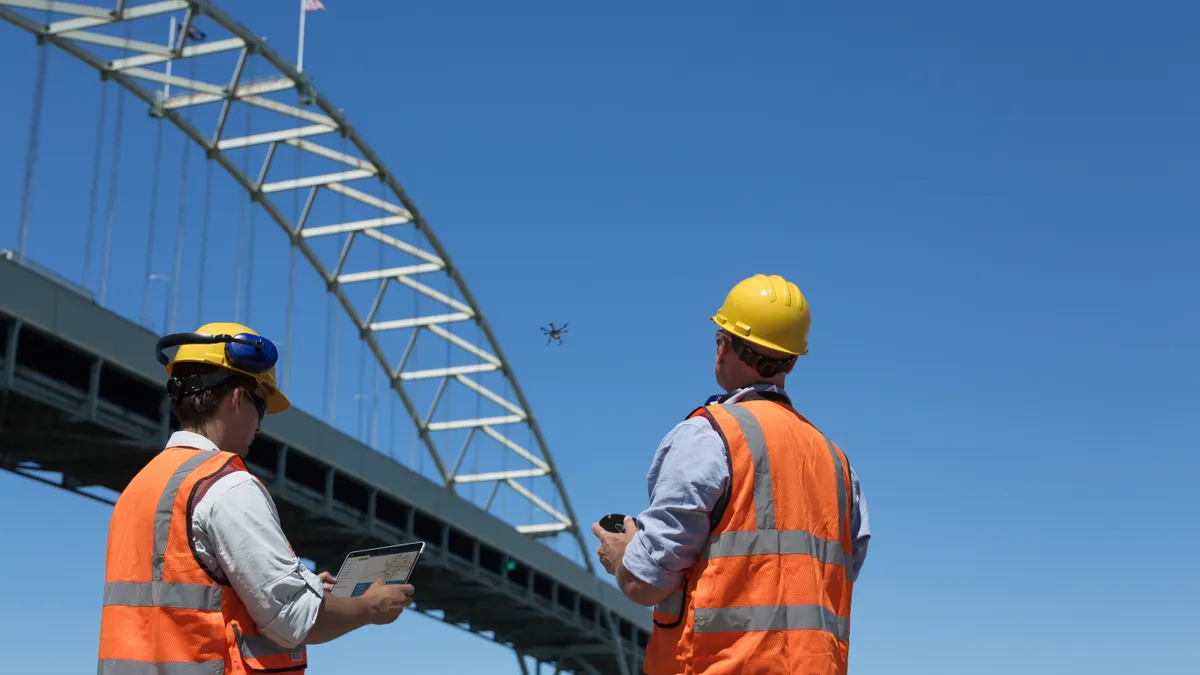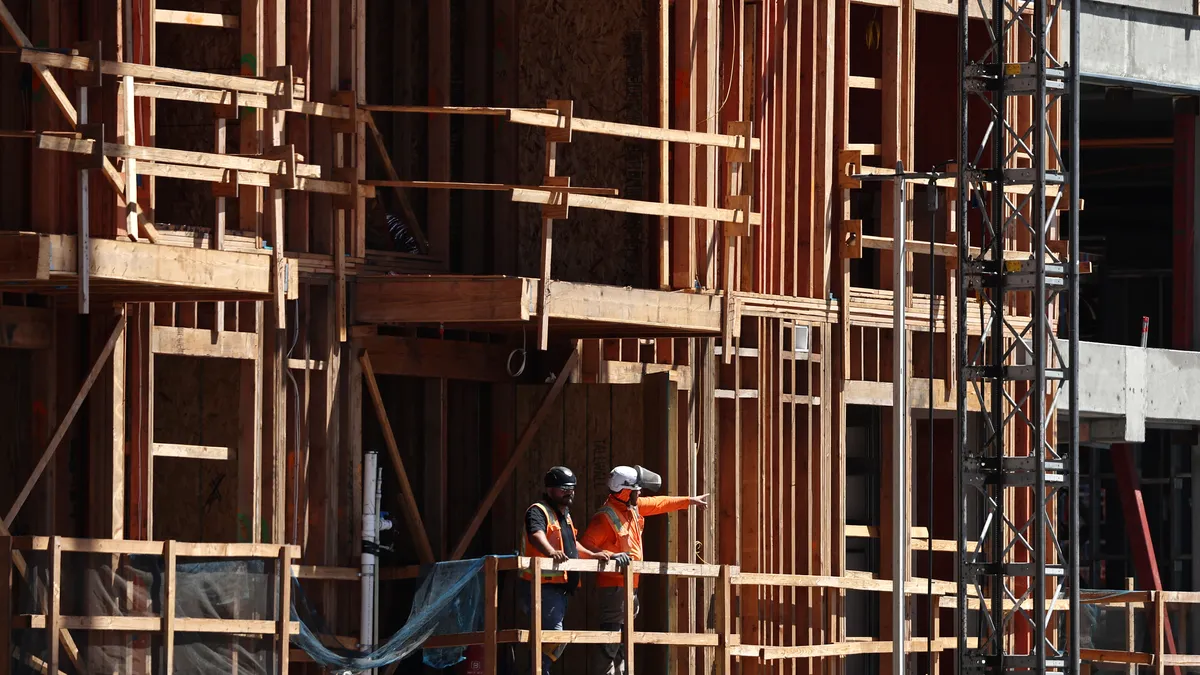Dive Brief:
- Minnesota, which has about 20,000 bridges, has been experimenting since 2015 with using drones to scan bridge lengths and access hard-to-reach areas for safety inspections, reported CityLab.
- The drones can hover nearby aging trusses, piers and bearings while collecting thousands of high-resolution images, which software then stitches together to create 3-D models. Engineers can then examine those models, as well as see the history, to time the structure's deterioration rate.
- The Minnesota Department of Transportation soon will identify which drones are most effective on which structures so it can develop a statewide plan.
Dive Insight:
According to the U.S. Department of Transportation, the country has a $123 billion bridge-repair backlog. The American Road & Transportation Builders Association said 23% of bridges are functionally obsolete or structurally deficient, while the American Society of Civil Engineers gave U.S. bridges a C+ grade in its latest Infrastructure Report Card.
Earlier this month, the Senate introduced the $75 billion Bridge Investment Act that would fund a 10-year competitive grant program aimed at repairing U.S. bridges. The proposed legislation has won support from numerous industry groups, but is so early in the process that it hasn't yet been assigned a bill number.
Now that bridges have people’s attention — especially since the 2007 Minneapolis bridge collapse that killed 13 people and injured 145 — enhanced technology is being explored as a way to evaluate their condition.
The Bridge Evaluation and Accelerated Structural Testing (BEAST) can accelerate the aging of construction materials and assemblies in full-scale applications to determine how they will perform in real-world conditions. A project of the Rutgers Center for Advanced Infrastructure and Transportation at the New Jersey university, BEAST can pit test results against each other to evaluate which system will result in a longer life. BEAST could explore, for example, steel coatings, metalizing systems, sealants and overlay systems for concrete decks.
Minnesota fitted the I-35W St. Anthony Falls Bridge with more than 500 sensors that track multiple bridge behavior factors, including temperature, strain, bearing movement and corrosion. Engineers are hoping that by monitoring the post-tensioned concrete box-girder bridge from its inception will be a valuable research and development tool to improve all bridge construction in the future.
Other bridge inspection technologies include AT&T's recently introduced bridge sensors, as well as the Iowa geographic information systems team's interactive map that shows the condition and serviceability of the state's 24,140 bridges.











